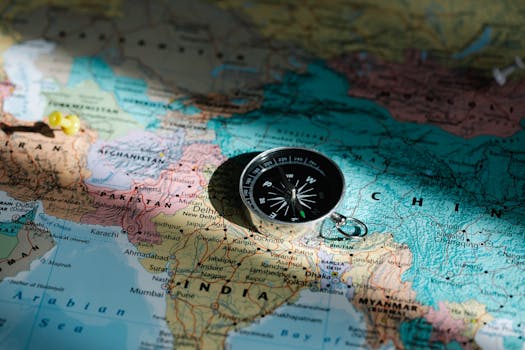
China's Supply Squeeze: Rare Earth Minerals and the Growing India-China Tech War
The recent restrictions on magnet exports from China have sent shockwaves through global supply chains, highlighting India's growing vulnerability to Chinese dominance in critical raw materials. Now, concerns are escalating as reports surface of potential restrictions on rare earth minerals, a crucial component in numerous high-tech applications, further fueling anxieties about a burgeoning India-China tech war. This strategic move by Beijing underscores the escalating geopolitical tensions and the urgent need for India to diversify its sourcing and accelerate its domestic production of these vital resources.
The Rare Earth Element Crisis: A Deeper Dive
Rare earth elements (REEs) are a group of 17 elements, including neodymium, praseodymium, dysprosium, and terbium, essential for the manufacturing of various high-tech products. These elements are crucial for the production of:
- Permanent magnets: Used in wind turbines, electric vehicles, smartphones, and various military applications. The recent magnet export restrictions have already impacted India's renewable energy sector and its burgeoning electric vehicle industry.
- High-strength alloys: Used in aerospace and defense applications.
- Catalytic converters: Essential for reducing emissions in automobiles.
- Optical fibers: Used in telecommunications and data centers.
- Medical equipment: Used in MRI machines and other advanced medical technologies.
China currently holds a near-monopoly on the processing and refining of rare earth minerals, controlling over 80% of global supply. This dominance gives Beijing significant leverage in international relations and allows it to exert pressure on countries dependent on its resources.
The Impact on India's Technological Aspirations
India's ambition to become a global technology powerhouse faces a significant hurdle with its heavy reliance on China for critical raw materials. The potential restrictions on rare earth minerals could severely hamper:
- Renewable energy growth: India’s ambitious renewable energy targets, aimed at reducing carbon emissions and enhancing energy security, could be significantly impacted by limited access to rare earth magnets crucial for wind turbines and solar power systems.
- Electric vehicle production: The nascent electric vehicle (EV) industry in India depends heavily on these minerals for motor production, and a supply shortage would significantly slow its growth. This could hinder India's efforts to reduce its carbon footprint and improve air quality.
- Defense capabilities: The reliance on Chinese rare earth minerals for defense applications raises significant security concerns, making India vulnerable to supply disruptions during times of geopolitical tension.
- Smartphone and electronics manufacturing: India’s burgeoning electronics manufacturing sector relies on these materials, and a shortage could disrupt production and limit growth potential. This could impact the "Make in India" initiative.
Navigating the Geopolitical Tightrope: India's Strategic Response
India needs to adopt a multi-pronged strategy to mitigate its dependence on China for rare earth minerals. This includes:
- Diversifying sourcing: Exploring alternative suppliers in countries like Australia, the United States, Canada, and Brazil to reduce reliance on a single source. This requires forging stronger diplomatic and economic ties with these nations.
- Investing in domestic exploration and mining: Stepping up efforts to discover and exploit domestic rare earth mineral deposits. This requires significant investment in research, infrastructure, and technology.
- Developing domestic processing and refining capabilities: Creating a robust domestic industry to process and refine rare earth minerals, reducing reliance on foreign processing facilities. This involves technological advancements and skilled workforce development.
- Promoting technological innovation: Investing in research and development to find alternative materials and technologies that reduce or eliminate the need for rare earth minerals in certain applications. This includes exploring substitutes and optimizing existing technologies.
- Strengthening international cooperation: Collaborating with other countries facing similar challenges to collectively address the issue of securing reliable supplies of rare earth minerals. This could involve joint ventures, technology sharing, and diplomatic pressure on China.
The Broader Geopolitical Context: China's Strategic Assertiveness
China's actions regarding rare earth minerals are not isolated incidents. They are part of a broader pattern of strategic assertiveness, aiming to leverage its economic dominance to achieve geopolitical goals. This underscores the need for India and other countries to:
- Strengthen strategic partnerships: Forging stronger alliances with like-minded countries to counter China's influence and ensure a more balanced global order.
- Diversifying supply chains: Reducing dependence on China across various sectors, not just rare earths. This requires a long-term strategic shift in global trade and manufacturing.
- Investing in resilience: Building more resilient and diversified economies that are less vulnerable to external shocks and geopolitical pressure.
The ongoing situation with rare earth minerals highlights the growing complexities of global supply chains and the strategic importance of securing access to critical resources. India's response to this challenge will not only determine its technological future but also shape its position in the evolving geopolitical landscape. The need for a comprehensive and proactive approach is paramount to ensure India's technological independence and economic security in the face of increasing geopolitical competition. The coming years will be crucial in determining whether India can successfully navigate this complex challenge and achieve its ambitious technological aspirations.



















